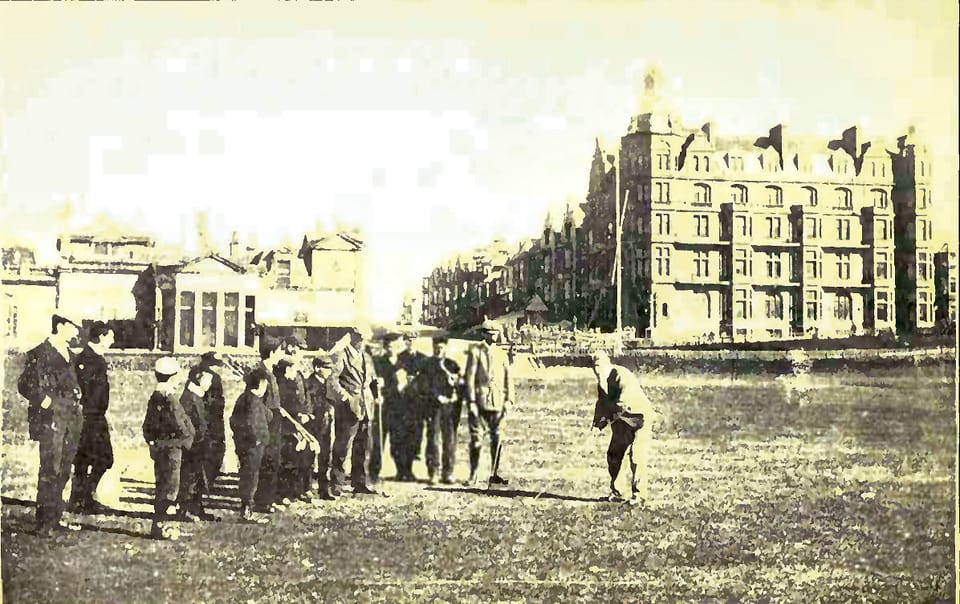A Brief History of Golf

Golf, early called the "gentleman's game," has a long, storied history that winds its way from the windswept coastlines of Scotland to the manicured fairways of modern championship courses. Its evolution over centuries reflects not just the development of sport, but shifts in society, technology, and culture.
Origins: A Game by Another Name
While golf as we know it took shape in Scotland, games involving a ball and a stick have existed since ancient times. The Romans played "paganica", where a bent stick hit a stuffed leather ball, and the Dutch had a game called "kolf" in the 13th century, played on frozen canals and fields. But these were distant cousins.
What sets golf apart is its key principle: hitting a small ball into a series of holes with the fewest strokes possible, using different clubs for different situations. This concept first truly appeared in 15th-century Scotland.
Scotland: The True Birthplace
The earliest record of golf as we know it comes from 1457, when King James II of Scotland banned the game, fearing it distracted young men from practicing archery. Ironically, this royal ban is what gave golf its first written acknowledgment.
Despite this attempt to suppress it, golf flourished. By the early 1500s, it had royal support—King James IV was a golfer himself. The Old Course at St Andrews, now seen as the "home of golf," was being played by the mid-16th century. By 1764, it established the 18-hole format that is now standard.
The first known rules of golf were written in 1744 by the Gentlemen Golfers of Leith, later known as the Honourable Company of Edinburgh Golfers. These rules laid the foundation for the modern game.
Golf Spreads Beyond Scotland
In the 18th and 19th centuries, golf gradually spread beyond Scotland. English nobles brought it south, and clubs were formed throughout Britain. The invention of the gutty ball (a solid ball made from the sap of the gutta-percha tree) in the mid-1800s made the game more affordable and playable.
This era also saw the emergence of the Royal and Ancient Golf Club of St Andrews (R&A) as the game's ruling authority outside the United States. By the late 1800s, golf clubs were popping up across Europe, Australia, and particularly in the United States.
Golf in America
The game made landfall in the U.S. in the late 1800s. The first 18-hole course in America was built in Chicago in 1893, and the United States Golf Association (USGA) was founded the following year. By the early 20th century, American golf was booming.
It was during this time that icons like Bobby Jones—an amateur who won the Grand Slam in 1930—helped shape golf’s place in American culture. In 1934, Jones also founded the Masters Tournament, which became one of the four major championships.
The Television Era and Globalization
Golf changed dramatically in the mid-20th century with the arrival of television, which brought the game into millions of homes. The cool confidence of Arnold Palmer, the dominance of Jack Nicklaus, and the charisma of Seve Ballesterosturned professional golf into a global spectacle.
By the late 1990s, Tiger Woods burst onto the scene, revolutionizing the game with his athleticism, mental toughness, and unmatched dominance. His 1997 Masters win by 12 strokes became a landmark moment, not only for golf but for sports as a whole.
Woods’ rise helped diversify golf’s audience and inspired a new generation of players around the world, including in Asia and Latin America.
Modern Golf: A Game for All
Today, golf is played by tens of millions around the world, both recreationally and professionally. The men's and women's games have grown significantly, with the LPGA and Ladies European Tour drawing top talent globally. Golf returned to the Olympics in 2016, further highlighting its international reach.
Technology now plays a key role—from ball tracking and GPS rangefinders to club customization and swing analysis software. Yet at its heart, golf remains rooted in the same challenge it presented to Scottish shepherds 600 years ago: navigating terrain, weather, and one’s own mind to put a ball in a hole with grace and precision.
From royal bans to global fanfare, golf’s journey is one of persistence and passion. And whether you're walking the historic links of St Andrews or teeing off at your local course, you’re taking part in a tradition that’s centuries old.

